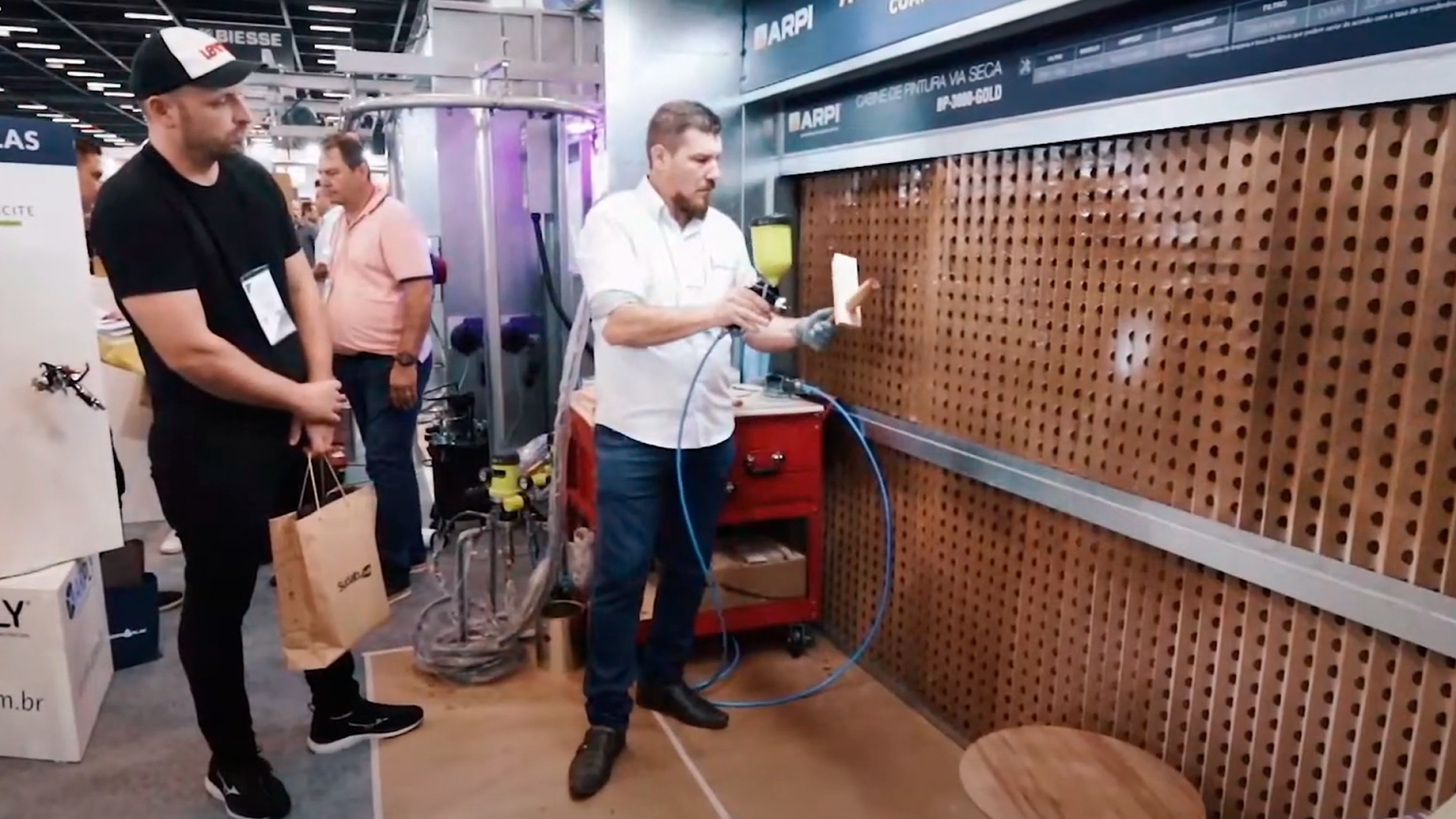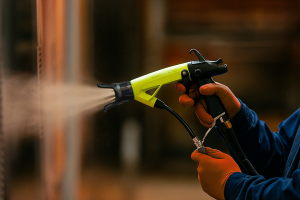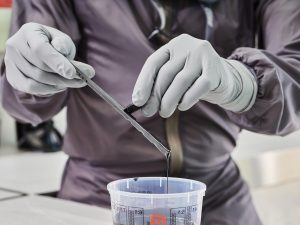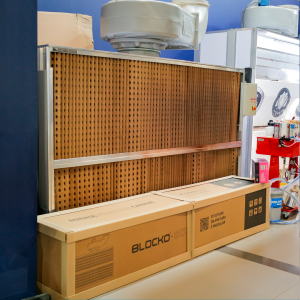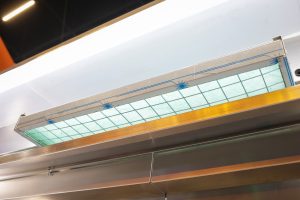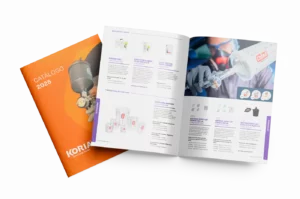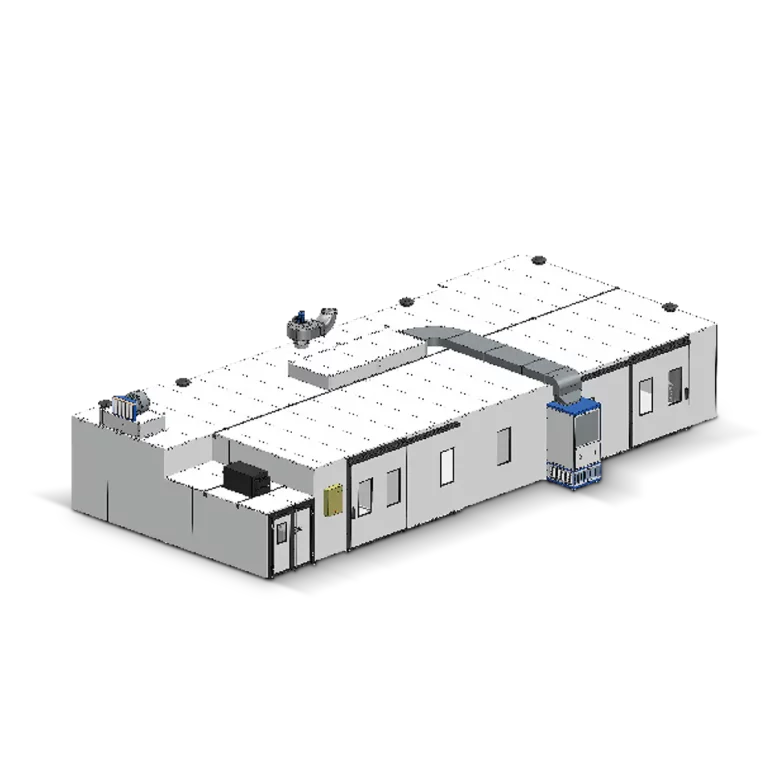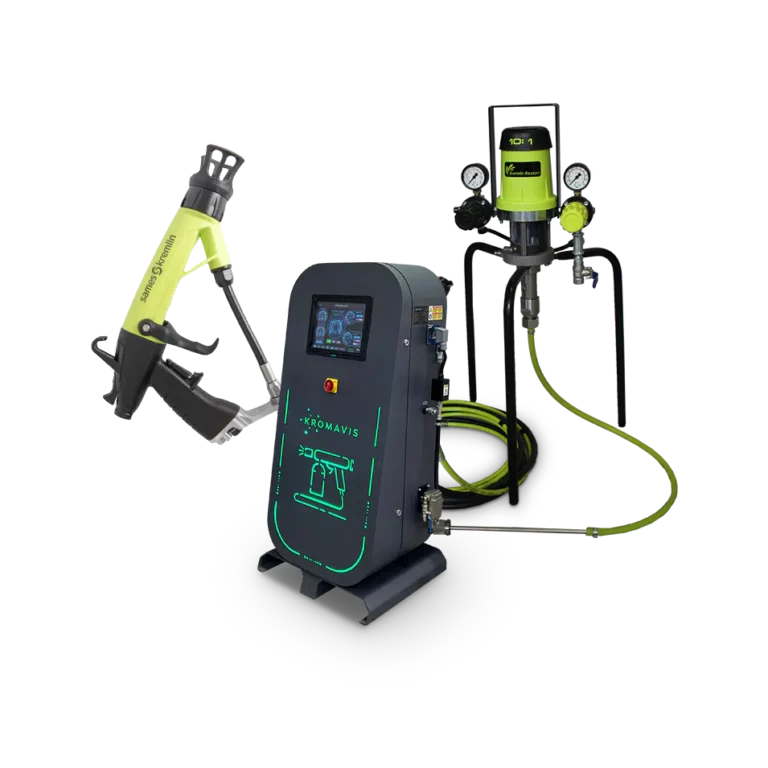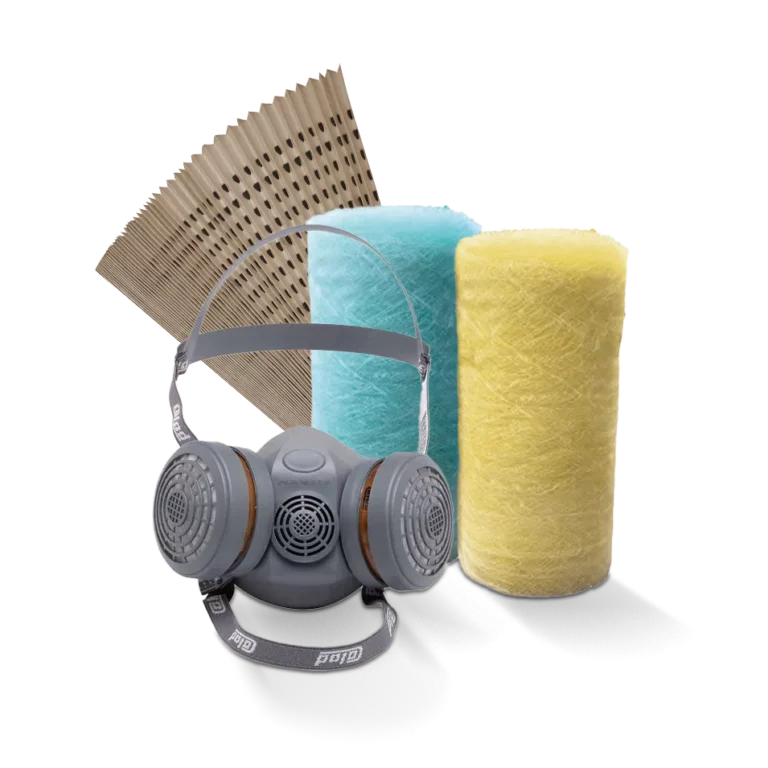In this guide, we focus on three fundamental elements that influence the choice of a spray gun: the relationship between gravity and suction, the strategic use of compressed air, and differentiation by volume and pressure.
By exploring the dynamics between gravity and suction, we examine how the position of the paint reservoir influences application. Whether it’s gravity naturally guiding paint into the gravity gun or suction using a tube to pull paint in, understanding these settings is crucial to choosing the gun that best aligns with your specific project requirements.
The use of compressed air is a decisive factor in the atomization of paint. Some spray guns rely on this component, while others operate independently. Understanding the distinctive features, operating principle and recommended applications for each type of spray gun is essential for making an informed choice.
In terms of volume and pressure, we have listed the specificities of conventional, HVLP and LVLP spray guns. The relationship between volume and pressure in each type directly impacts the finish, paint consumption efficiency and suitability for different projects. Knowing these nuances makes it easier to select the spray gun that best suits your painting goals.
Gravity vs. Suction in Paint Guns
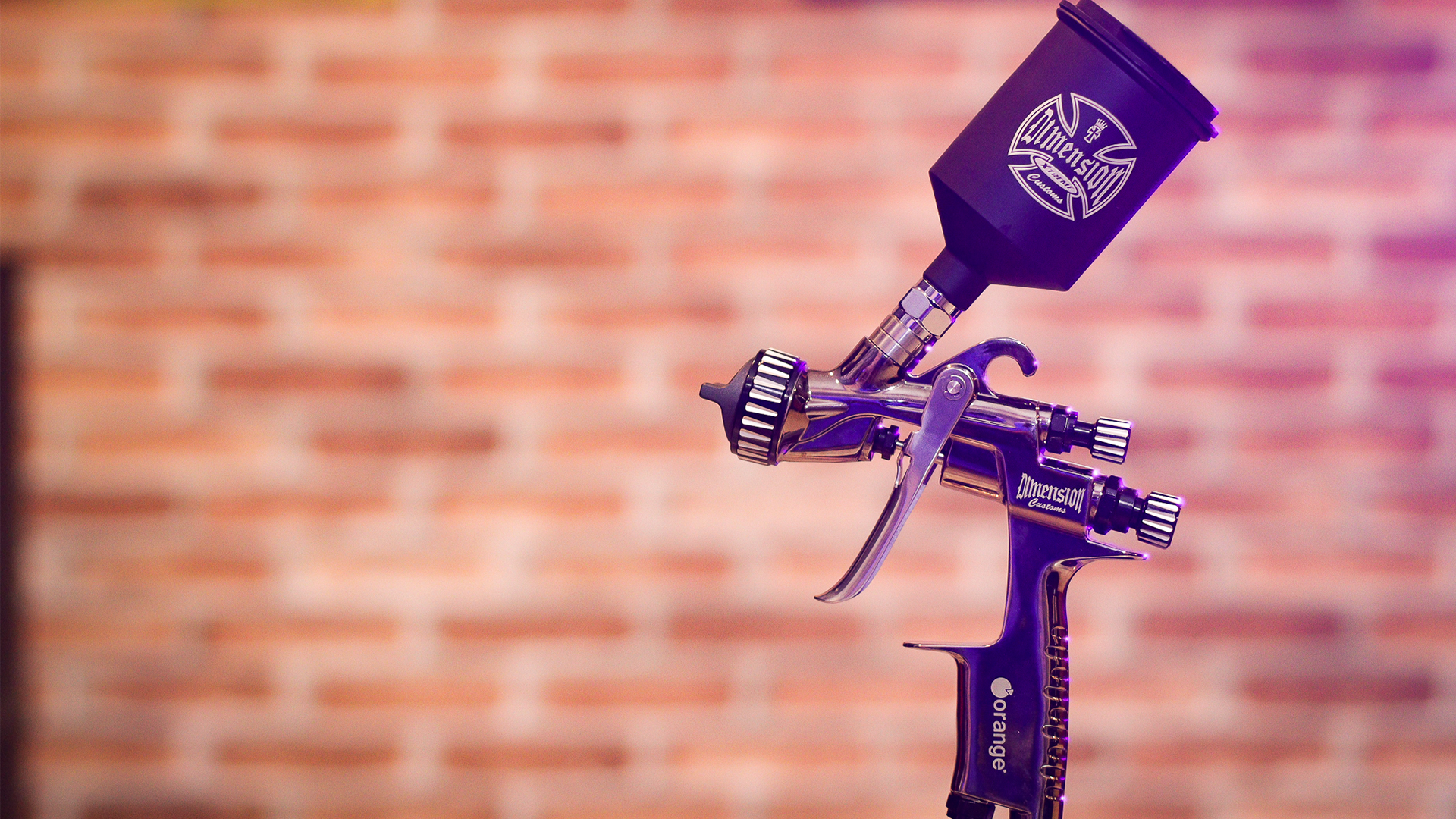
To the paint guns can be differentiated mainly by the paint supply method. This aspect is related to the position of the paint reservoir in relation to the gun. The two main configurations are gravity guns and suction guns.
Gravity Gun
Gravity spray gun configurations are characterized by the positioning of the paint reservoir, which is located above the spray gun itself. This arrangement takes advantage of the force of gravity, allowing the paint to flow naturally towards the spray gun nozzle. This feature not only provides finer control over the paint flow, but is also particularly suitable for work that demands precision and fine detail.
Key features of this approach include its effectiveness on projects that require meticulous application. The gravity spray gun offers enhanced control over the spray pattern, making it an ideal choice for jobs that require precise application. However, it is important to note that this setup has a smaller paint capacity, making it more suitable for smaller-scale projects. It is commonly used for touch-up work and for applying detail to small objects, providing precise, high-quality results.
Suction gun
The suction gun is characterized by the positioning of the paint reservoir below the gun itself. In this case, the paint is drawn into the gun by means of a suction tube. One of the main advantages of this configuration is its significant paint capacity, making it particularly useful for covering large areas without the need for frequent refills.
Their main features include a larger paint capacity, which makes them ideal for projects that require coverage over large areas, minimizing the need for constant refills. However, it is important to note that the suction gun offers less precise control over the paint flow compared to gravity guns.
The use of compressed air in paint guns
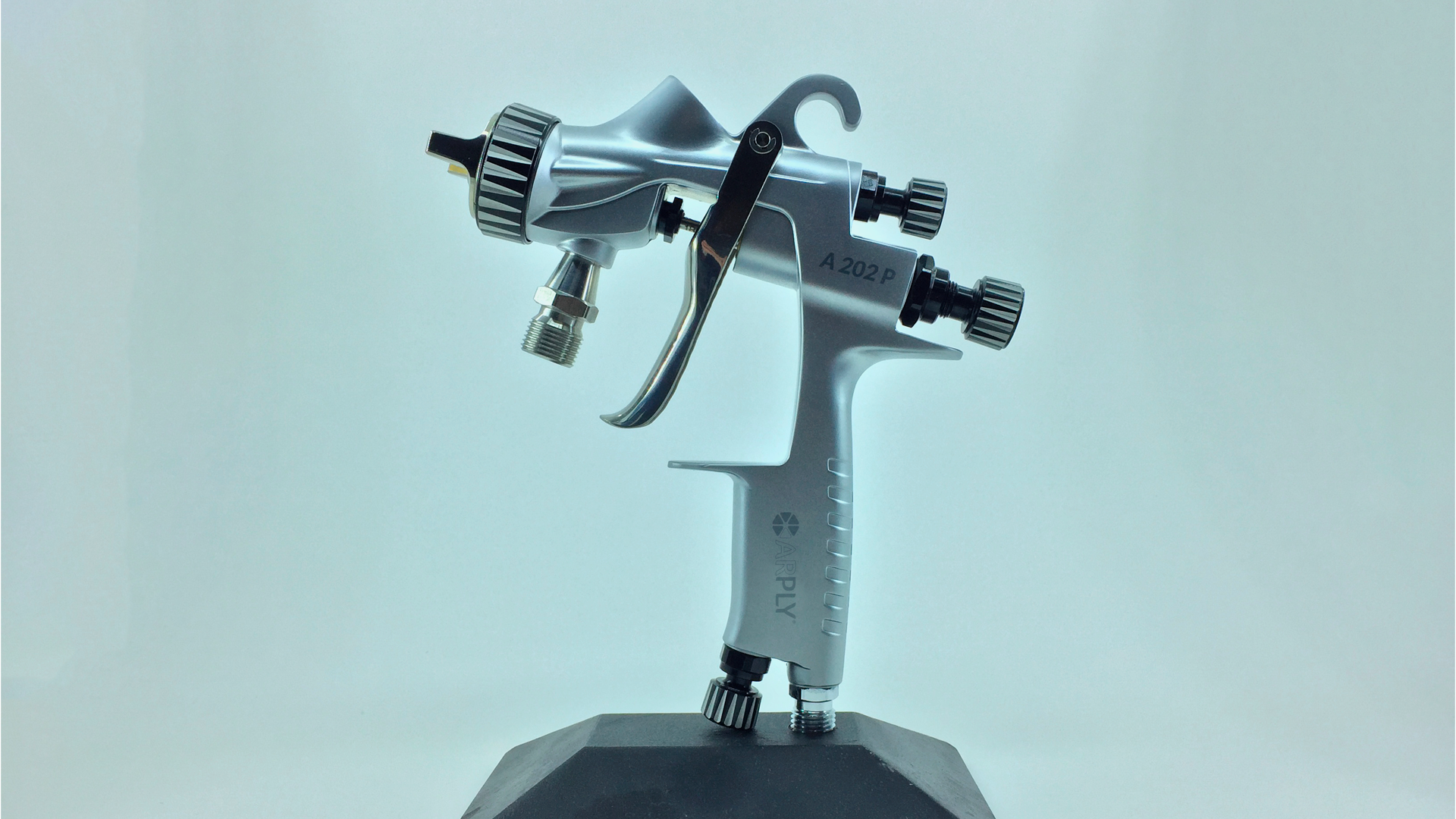
The use of compressed air is a distinctive feature in paint guns. Some guns rely on compressed air to atomize the paint, while others do not require this component for the process.
Gun using compressed air
The spray gun that uses compressed air to atomize paint is a versatile tool that comes in different configurations, such as gravity, suction, or pressure. Its operating principle is centered around using compressed air to create an effective spray of paint. Adjusting the airflow directly affects the rate at which the paint is sprayed, providing precise control over the spray pattern.
Key features of this gun include the ability to precisely adjust the spray pattern by controlling the airflow. Additionally, its versatility is remarkable, allowing users to tailor the tool to specific project requirements.
The operating principle of this gun involves using a pressure system to feed the paint. This feature makes it particularly suitable for quick work on large surfaces, such as painting fences and large furniture. Its efficiency in terms of coverage and speed makes it a favorable choice in situations where speed of application is crucial.
Airless gun (without the use of compressed air)
The spray gun that does not rely on compressed air to atomize the paint is an option specially designed for large-scale projects, such as painting walls and facades. Its operating principle is different because, unlike spray guns that use compressed air, this one does not rely on this source of pressure. Instead, the paint is pressurized mechanically, resulting in a fine spray that is ideal for covering large areas.
Its main features include its independence from compressed air. Atomization is achieved through mechanical pressurization of the paint, providing effective application in projects that require rapid coverage of large surfaces. In addition, this gun is known for generating less overspray, contributing to a more controlled and economical process.
Differentiation by volume and pressure in paint guns
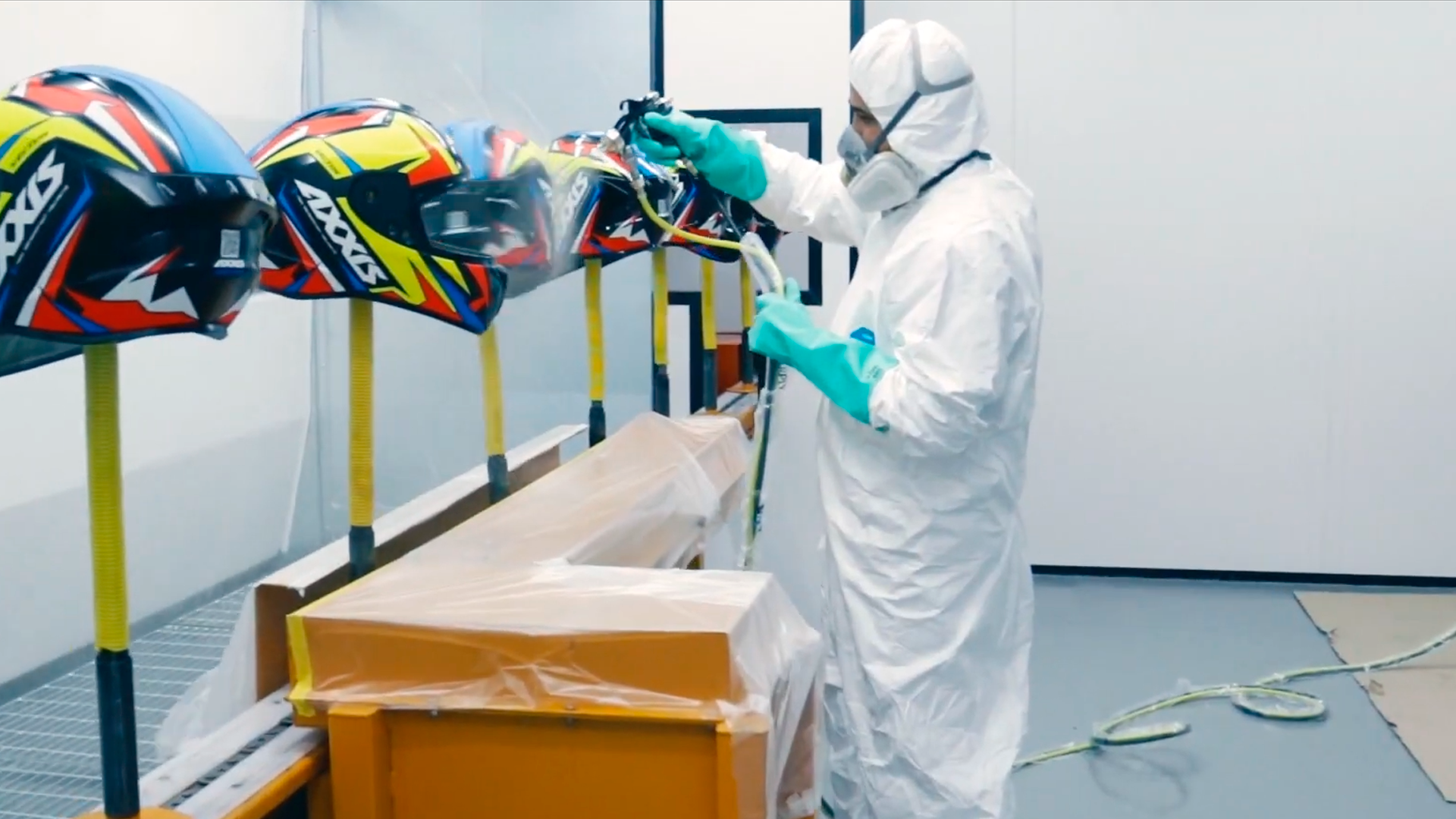
The differentiation between conventional, HVLP and LVLP spray guns is often based on volume and pressure characteristics. These designations reflect how the guns manipulate air and paint to achieve different spray results.
Conventional paint guns
The spray gun, which uses a combination of volume and pressure to atomize paint, is a versatile tool found in different configurations, such as gravity, suction or pressure. Its operating principle is based on the use of compressed air to atomize the paint, providing an effective and controlled application. This feature makes the gun suitable for high-quality painting and fine details.
The main features of this spray gun include its remarkable versatility in handling different types of paint. In addition, it can be adjusted to suit a variety of jobs, from fine detailing to covering larger areas. This adaptability makes it a preferred choice in environments where the application of different types of paint is required.
HVLP (High Volume Low Pressure) Paint Guns
The spray gun that delivers a large amount of air at a lower pressure is known for its effectiveness in reducing overspray and optimizing paint usage for more efficient application. This versatile spray gun can be found in gravity, suction, or pressure configurations, providing a diverse range of options to meet specific project needs.
The operating principle of this gun involves reducing air pressure, which results in less overspray and paint waste. This approach makes it suitable for high-quality painting with less air pollution, and is particularly suitable for automotive painting and wood finishing projects. Its use stands out in situations that require refined results, minimizing the environmental impact during the process.
LVLP (Low Volume Low Pressure) Spray Guns
The LVLP spray gun, similar to the HVLP, stands out for offering a slightly lower paint transfer rate. This efficient spray gun is designed to optimize paint and air consumption, and is a versatile choice available in gravity, suction, or pressure configurations. Its effectiveness in balancing economy and quality makes it a valuable tool for a variety of projects.
The operating principle of the LVLP spray gun is similar to the HVLP, but with a slightly lower paint transfer rate. This feature results in an effective and controlled application, indicating its efficiency in terms of air and paint consumption. This spray gun is often used in automotive painting and furniture projects, where the search for efficiency and economy is crucial without compromising the quality of the final result.
The main features of this spray gun include its efficiency in paint and air consumption, making it suitable for projects that require savings without compromising the quality of the application. This balanced approach makes it particularly useful in situations where efficiency is a priority, while maintaining high standards of finish.
Did you like this post? Share it with your friends or on social media. For more tips on painting and its equipment, visit our blog with exclusive content.
